Speaking of boldly going where no-one has gone before, or at least taking a look: The Kepler mission has been discovering hundreds of new exoplanet candidates. By a count on 2 Feb 2011, it has discovered over 1200 planet candidates with apparent diameters ranging from less than earth to the usual Super-Jovians discovered by other methods. Among these candidates, several of them are terrestrial planets within the “habitability zones” of their parent stars, where liquid water could exist on the surface.
There are three main classes of detection of Extrasolar planets used to date. Past detection methods have been heavily biased towards detecting extremely massive Super-Jovian worlds, and this lead to (premature and baseless IMO – if all you have is a hammer …) speculation that terrestrial planets were rare in the universe. Kepler has shown that there is a vast abundance of smaller planets out there, and some rather extreme diversity in what can occur.
Kepler Data Analysts:
Small candidate planets with periods less than 30 days are much more common than large candidate planets with periods less than 30 days and that the ground-based discoveries are sampling the large-size tail of the size distribution. Note that for a substantial range of planet sizes, a 1/R2 curve fits the Kepler data well. Assuming the false positive rate and other biases discussed above are independent of planet size for planets larger than two Earth radii, this implies that the frequency of planets decreases with the area of the planet.
That should put that to rest.
The methods:
The first is to carefully null out the parent star’s light and look for reflected starlight off of the planets. This method favors gigantic planets far from their parent star, such as the Super-Jovians discovered in orbit around Formalhaut.
The second method is to observe the parent star’s position extremely carefully over a long period of time to look for gravitational wobbles induced by massive partners. This method of planetary detection favors massive planets in close orbits around their star.
The third method, the one that Kepler uses, detects planets by carefully observing fluctuations in the received starlight as a planet transitions across the stellar disc. For this method to work, Kepler’s line of sight has to be aligned parallel to the planetary disc of the target star system. This excludes roughly 1 in x star systems that Kepler is pointed at, assuming random orientation of the discs.
Kepler continuously monitors the brightness of 145,000 stars within its field of view.
So far, among the 1200 candidates detected by Kepler in the February data release, 54 candidates are within the habitable zone of the target star. Among those, five are close to Earth-sized and are believed to be terrestrial planets. Kepler has only been taking data for four months so far, and can only confirm planets with orbital periods within this timeframe. As it takes more data, it will be able to detect planets further and further out (within the habitable zones of hotter stars).
There have been several confirmed detections of multi-planet solar systems so far, including the star Kepler 11, which has 6 planets with some rather unusual properties. Not only has Kepler used the star to measure the presence of the planets, but it has deduced the density and mass of the planets, and confirmed that they are planets using their mutual gravitational influence on each other and the subtle effects that they have on each other’s orbits. This system is quite bizarre and is really like nothing in our solar system. These planets have very low apparent densities, from 3.1 g/cc (slightly less dense than the moon – maybe a light element planet or volatile world?) to around 0.5 g/cc (less dense than Saturn). Those latter planets would be gas giants, but would have to be very close to evaporation, being as close to the star as they are and within the size range of Neptune. In addition, these planets are all so close to each other and crammed so close to the star that the system is very nearly unstable.
http://www.universetoday.com/83030/kepler-discovers-6-planet-exo-solar-system/
http://arstechnica.com/science/news/2011/02/keplers-latest-a-tightly-packed-six-planet-system.ars
http://www.skyandtelescope.com/news/home/115102594.html
http://planetquest.jpl.nasa.gov/missions/keplerMission.cfm
The Kepler mission has revealed an amazing wealth of information about the extra-solar universe. To think that this sort of exploration is taking place in our lifetimes, and that with achievable technology we may come to know quite a bit about these planets and answer fundamental questions about life in the universe, and the relative abundance of other terrestrial worlds is mind-boggling. We won’t have to guess for very much longer. With this and future Extrasolar discovery missions, we will soon know vastly more than we have about what other planets are out there.
**Note – this chart is for planetary *candidates*. NASA doesn’t consider these planets confirmed until their presence has been verified by another instrument or method. The ones that have been are listed on the NASA website.
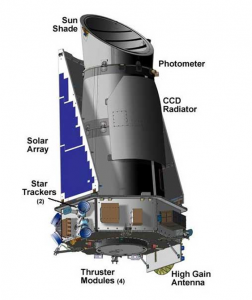
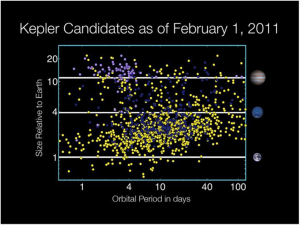
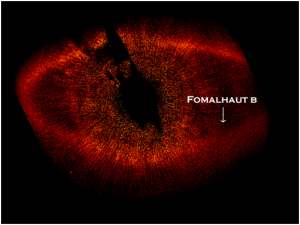
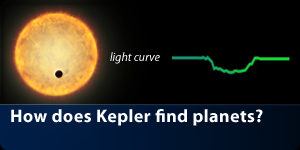
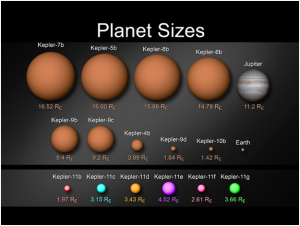
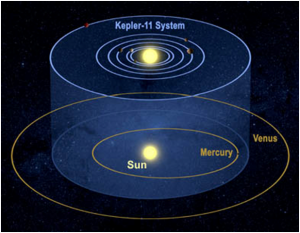
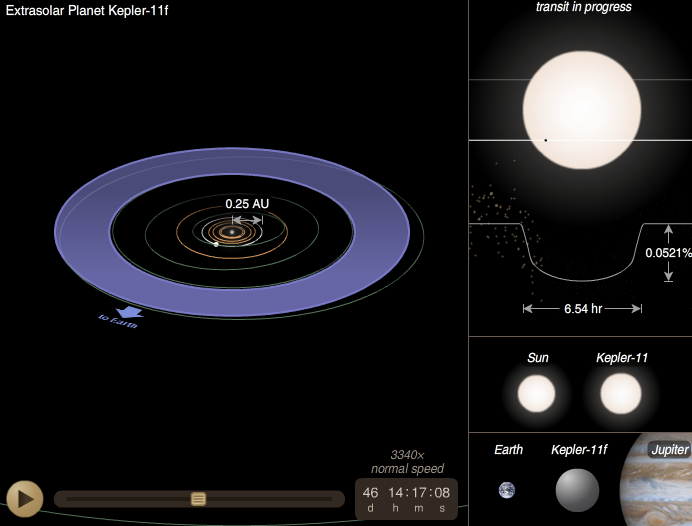
Comments (0)